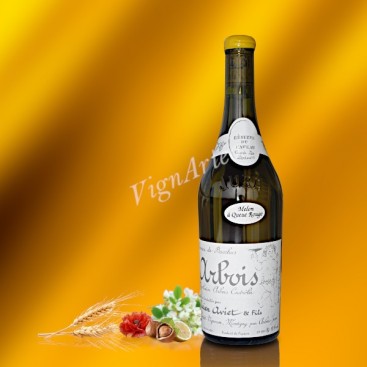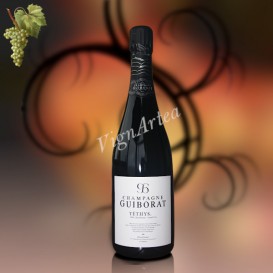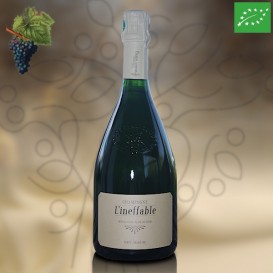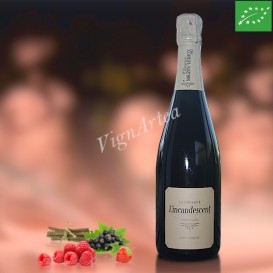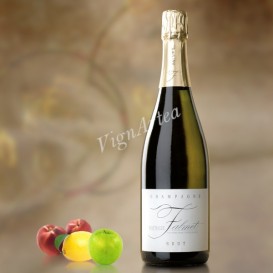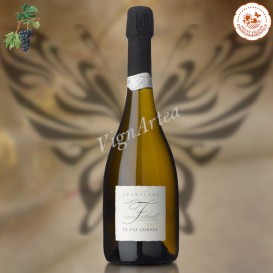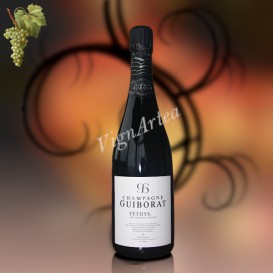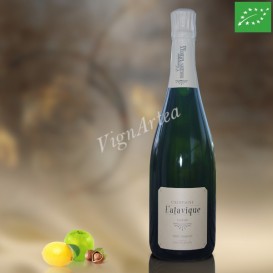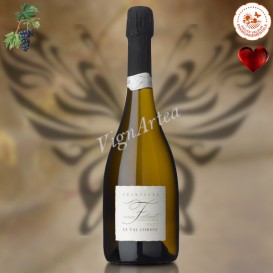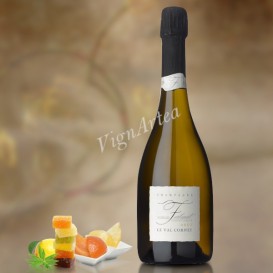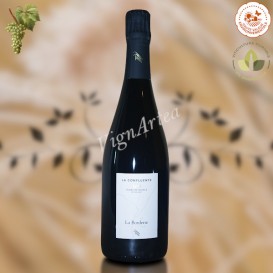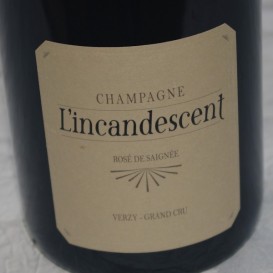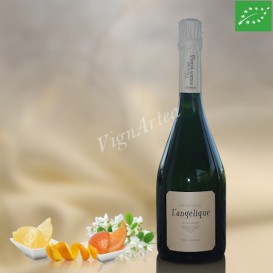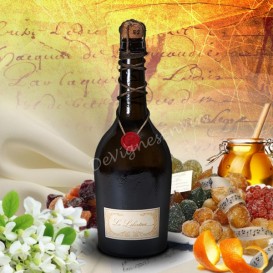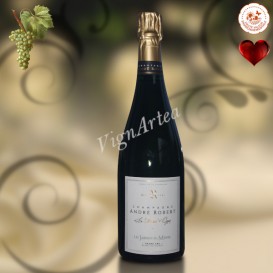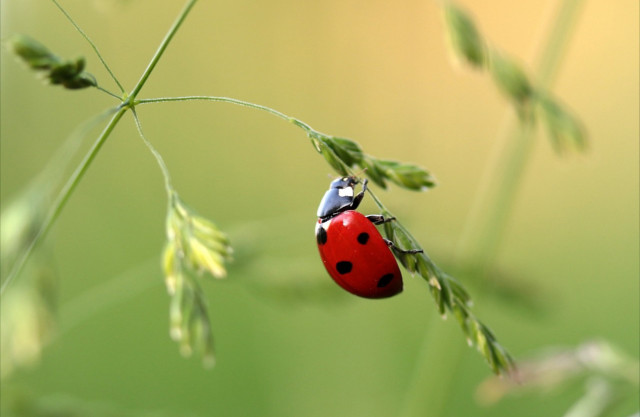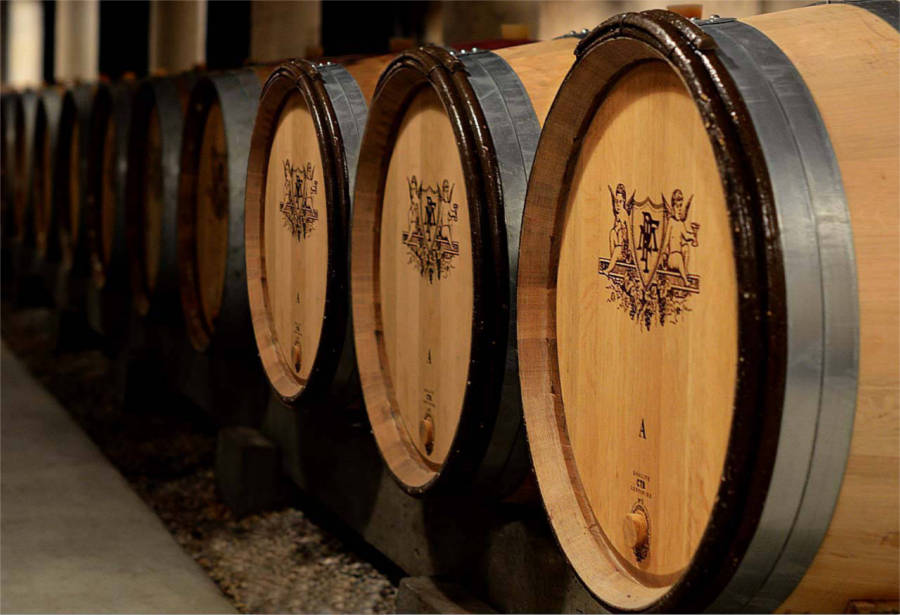MELON À QUEUE ROUGE 2022 - Cuvée des Docteurs (Lucien AVIET & fils)
JURA - AOP ARBOIS - DRY WHITE WINE
Grape variety: Melon à queue rouge (100%)
Native yeasts Ageing in barrels for 1 year
- Nose: unctuous. Notes of almond and white grapefruit with a hint of anise.
- Palate: rather round with a fleshy texture.
- Tasting date: February 2024.
- OUR OPINION: 2022 is a hot and dry vintage. The acidity is a little less sustained than usual, and the profile is more unctuous on the palate.
DESCRIPTION
The Melon à Queue Rouge is a mutant grape variety of Chardonnay. The Jura region is known for its multi-variant chardonnays and the Melon à Queue Rouge is a mutated chardonnay whose stems turn red during maturation.
The reason why this mutated chardonnay is called "melon" dates back to the Middle Ages. At that time, the "melon de Bourgogne", currently cultivated in the Loire Valley to produce the muscadet, was very widespread in Franche-Comté : the high productivity of this grape variety made it possible to supply large quantities of wine, but of poor quality. It had been quickly decried and in 1700, the parliaments of Franche-Comté and Burgundy ordered the uprooting of the "melon de Bourgogne" vines, considered to be of poor quality. To save the latter from destruction, the Jura winegrowers gave the Chardonnay plants the name of "Melon d'Arbois" : part of the Chardonnay was therefore uprooted in place of the Melon de Bourgogne. After the revolution, the Chardonnay resumed its place, but kept its local name of "Melon d'Arbois".
This mutated chardonnay gives birth to very subtle wines whose style differs from Burgundy chardonnays.
TERROIR
The Melon à Queue Rouge vines from the Lucien Aviet estate are planted in Montigny-lès-Arsures (places Nonceau , Château Gimont and Grands Vergers) and in Arbois ( L'horloge). Two terroirs are therefore mixed, the Triassic marls and the Lias marls :
- L'horloge : located in Arbois, this plot faces the clock of the village church bell tower, hence its name. The bedrock that constitutes its soil is the oldest of all the terroirs of the Arbois designation, it is the Triassic marls, broken down into two series : the iridescent Keuper marls covered with foliated black marls dating from the Rhetian ( -210 to -201 mya). They settled between -240 and -201 my, when the Jura was covered with shallow and salty lagoons.
- Nonceau, Château Gimont and Grands Vergers : these three plots, located in Montigny-lès-Arsures all rest on a substrate of Lias marls (-201 to -174 my), covered in surface with a thick layer of limestone scree coming from the erosion of the ledge overlooking the vineyard, with the exception of Château Gimont, where the root network is directly in contact with the Lias gray marls : this place is a small hill isolated from the slope by a depression where the scree are accumulated, without covering the Château Gimont's hill. The Lias marls formed -190 million years ago in a shallow and slightly agitated marine environment, whose low oxygenation allowed just a partial decomposition of the microorganisms that inhabited it, resulting in a grayish tint of the marls.
WINEGROWING & WINEMAKING
The grapes come from vines around forty years old and issued from "sélection massale" : this cutting technique makes it possible to genetically preserve all the characteristics and qualities of the mother plant.
The estate does not carry out systematic and preventive phytosanitary treatments , but it uses them only when it is absolutely necessary. The grapes are harvested manually, and immediately pressed in the cellar. The must ferments in thermo-regulated tanks then it is aged in barrels for 1 year with regular topping (non-oxidative ageing).
The wine is then slightly filtered before bottling.
| Country | Jura |
| Color | White |
| Orange wines | No |
| Clay amphorae wines | No |
| Vintage | 2022 |
| Capacity | 75 cl |
| Single Grape Variety | Melon à queue rouge |
| Alcohol rate | 14 % |
| Quality Designation | Arbois |
| Cellar Potential | 10 years |
| Service advise | 12-13°C (53°-55°F). Open 1/4 hr before the service. |
| Culture Methods | Sustainable cultivation method |
| Fining | No |
| Filtering | Yes |
| Comments | Fermentations with native yeasts ♦ Ageing in barrels for 1 year. |

